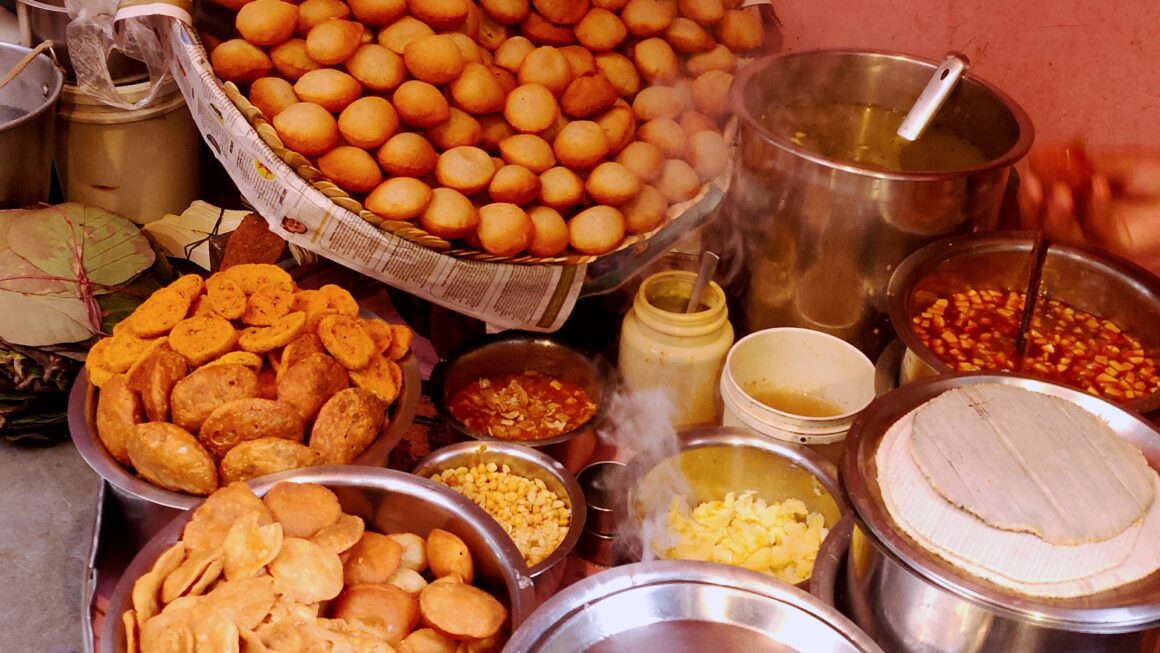Even at 6:30 am on a December morning, there isn’t one specific smell, sound, voice or vibe that I can ascribe to Shahjahanabad (known as Old Delhi or Purani Dilli today).
On a decrepit railway luggage cart, a chaiwallah (tea seller), a muffler swathed around his head, has been brewing tea possibly since moonset. Men heading to work, untrained, perhaps lazy to make their own tea are his regular customers. Pressed for time, they quickly slurp the tea with rusks and fain puffs (or khari – flaky savoury puff pastry) while contributing to the 2-minute crack-of-dawn grapevine bulletin, which also appears to be a daily activity.
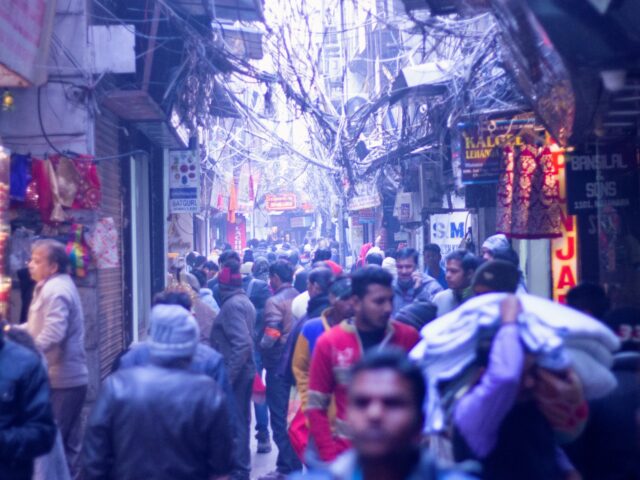
Porters wheeling cumbersome carts of wholesale goods pass by, loudly warning those in their way to step aside, then disappearing into the fog while the neighbourhood slowly pandiculates into wakefulness.
Within the Chandni Chowk area, porters and sanitation workers are among the first to arrive. They move as quickly as they can while the streets are still navigable. Along with the essentials – chaiwallahs and breakfast bawarchis who start their brews and set their doughs for the anticipated early breakfast buffs.
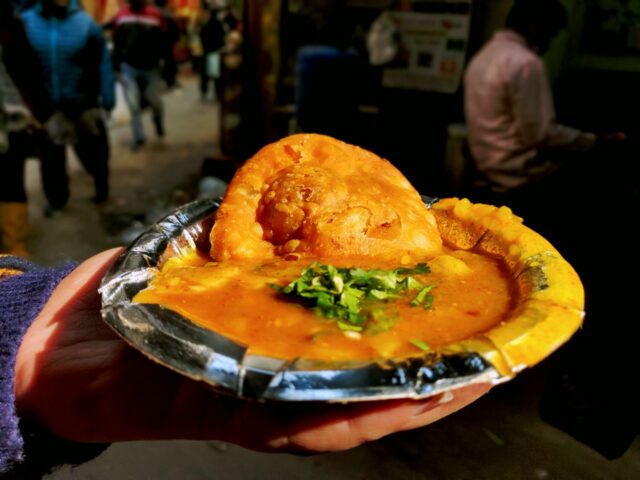
Under an ancient forbearing tree, a barber reconstructs his salon every day, his motor memory laying it out like clockwork, well before his clients start arriving. He quickly jogs to the nearby tea seller, warming up and attempting to tune into the happenings.
As the labyrinth comes to life, windowsills extend and walls indent to become shops and kitchens. Every inch of space is occupied by expertise of some kind.
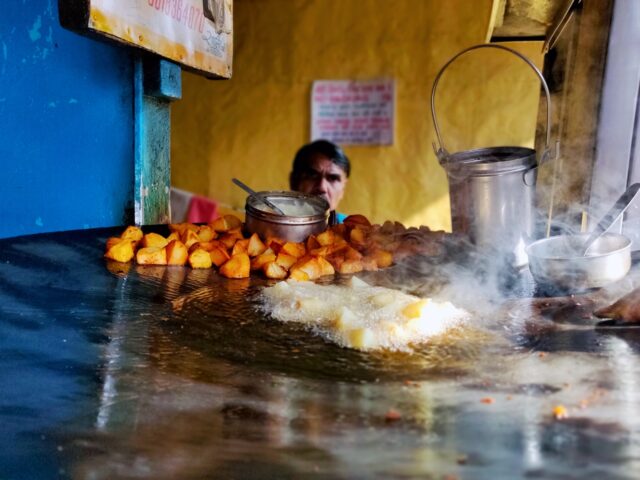
The silver smiths and perfumeries of Dariba Kalan, spices of Khari Baoli, ‘designer’ wedding wear boutiques of Chandni Chowk, pre-loved books of Nai Sarak. Barbers, cobblers, locksmiths, Paan Wallahs, torn note exchangers, ear cleaners. This doesn’t even begin to depict the hedonistic horizon of Purani Dilli.
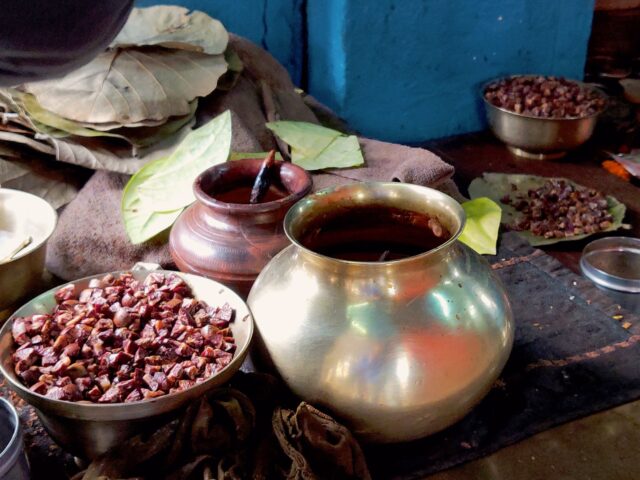
Then there’s the unapologetic gluttony of deep fried bedhmi with nagori; khamiri roti with nahari, shahi sheermal and bakharkhaani; the hefty paranthas of gully paranthewali. Each of these cardinal, if you are to correctly appreciate the abundance of erstwhile Shahjahanabad.
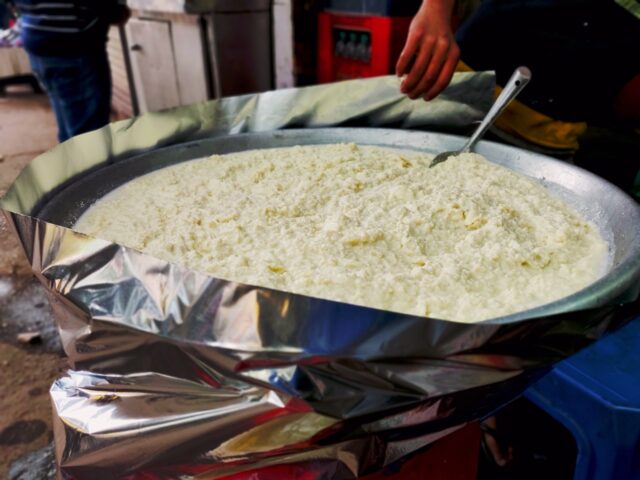
It can be wearing to stand here and deduce any organization. But, if you reach early enough, you might be able to tell that there is, somewhat of an order of appearance warranted for each of these characters, before the theatrical ensues.
While the locals are readying for their breakfast run; and unclaimed scooters and cycles are yet to be defiantly parked in alleys, the stars of this all-consuming production unassumingly drift in and take their spots.
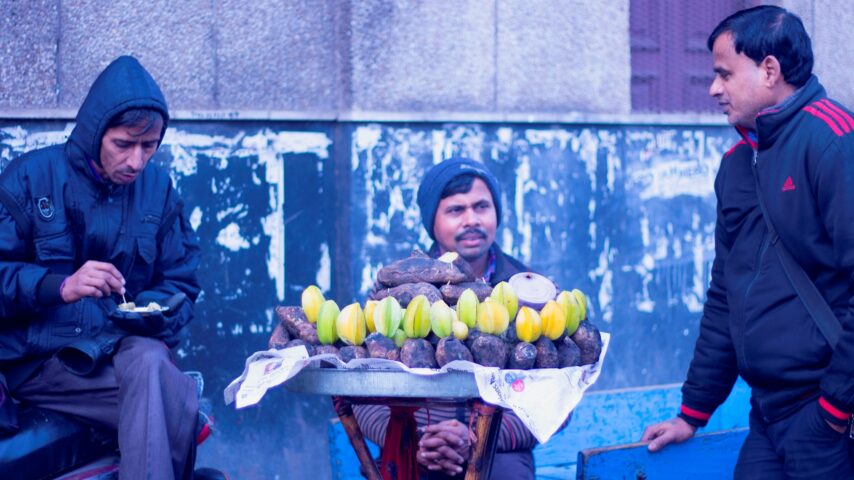
I pace through the labyrinth, now fully awake with tourists, dwellers, rickshaw wallahs and merchants. After 10 minutes of being on call and following directions on the phone, I reach a narrow fork expecting a shop somewhere. There is only a small group of people huddled very close together. Most definitely, not big enough to fit an eatery of any kind. As I walk closer, whiffs of warm shortbread hit me with the freezing wind. The huddlers make way, assuming I’m here for what they’re here for – warmth from the angeethi and this neighbourhood’s very own live updates.
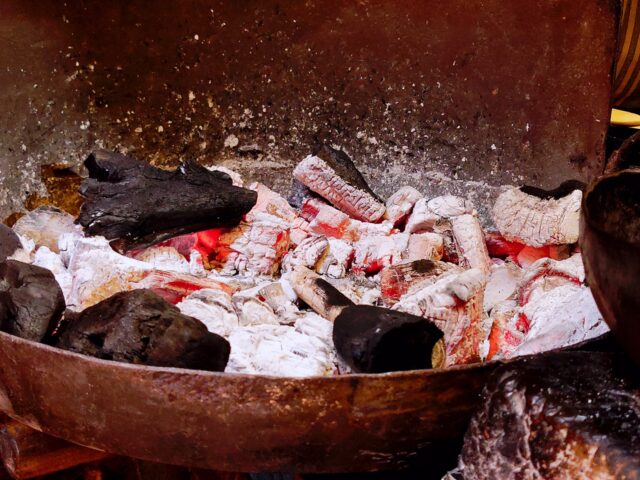
Standing in the centre, his entire restaurant laid out on a small table, Mahesh smiles and nods at me. “Maine kaha tha na yahin miloonga 1247 ke saamne, yahi address hai,” (I told you, you’ll find me here, opposite 1247, this is the address) he points toward the building opposite him.
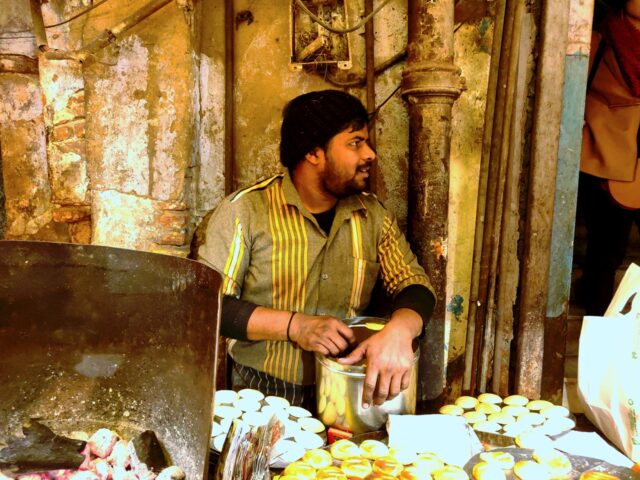
His khomcha has a small board that reads, “shuddh desi ghee ki nankhatai, 50 rupay ki 100 gram,” (pure clarified butter shortbread biscuits, 100 grams for 50 rupees). That’s it. That’s the name of his shop.
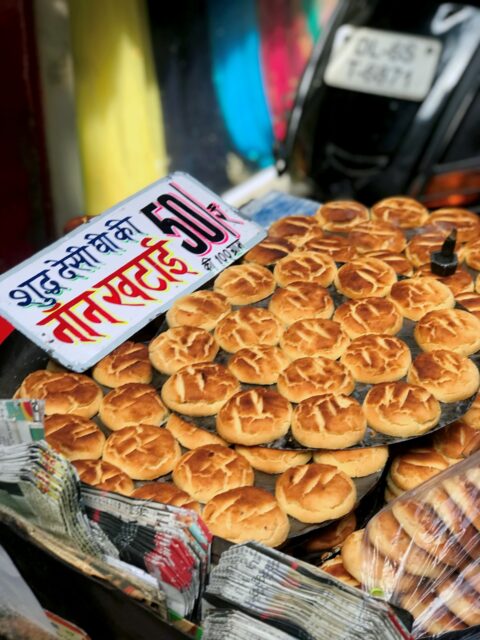
For the uninitiated, a khomcha is a makeshift kitchen-on-a-stand; but there’s no one word to describe this resourcefulness, really.
And ‘Nankhatai’ comes from Persian words ‘naan’ meaning bread and ‘khatai’ meaning biscuit. This shortbread biscuit of Dutch origin has been mastered by these lineal descendants of nankhatai bakers from Agra.
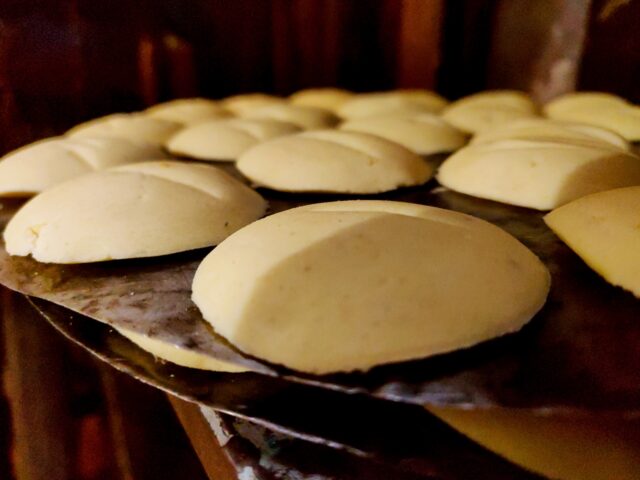
At 10 am sharp, Mahesh sets up his angeethi (coal fired desi oven) and opens his steel drum filled with dough, which he has spent all morning preparing. With a small steel stamp-like round mould, he scoops out disks of dough and sets them in a cast iron pan. He places the pan on a brick base and covers it with a kadhai (wok) filled with embers. After every few seconds he removes the kadhai and rotates the pan, placing a small piece of newspaper on the well-done ones to prevent them from burning.
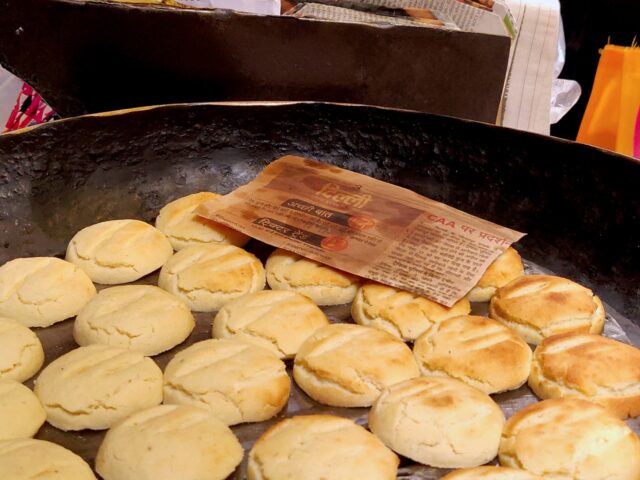
“Hum toh desi kaam hi karte hain, gas pe kaam chal hi nahi paata, aisa maal banega bhi nahi,” (we cook in our desi style, the gas stove doesn’t cut it for us, the product won’t turn out this well) he says, not looking up for too long.
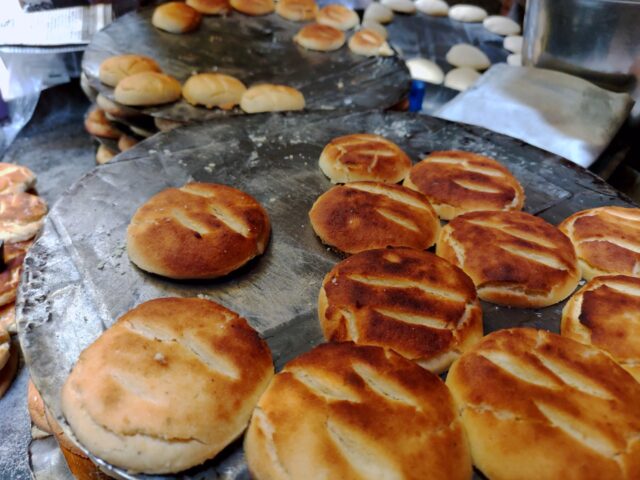
The biscuits bake very fast so he mustn’t get distracted. A neglected nankhatai can act difficult toward your teeth.
As soon as they’re ready, they’re lined on thin round sheets fashioned from recycled desi ghee cannisters and left to rest. A well-napped nankhatai, on the other hand, wakes up fresh and attempts to comfort your soul.
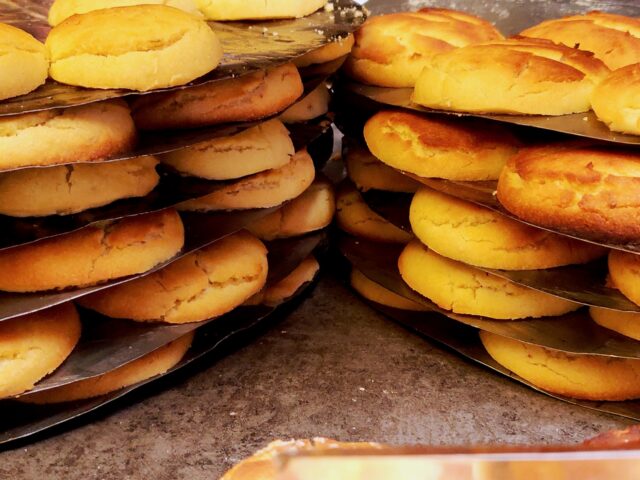
He shares the recipe, probably knowing that even with the recipe it would be impossible for me to recreate this.
Ingredients –
2.4 kg ghee (clarified butter)
2.7 kg cheeni (sugar)
500 gm besan (gram flour)
500 gm sooji (semolina)
4 kg maida (refined wheat flour)
1. Pehle ghee aur cheeni milaake phent te raho, jitna phento utna behtar banega (mix ghee and sugar and keep whisking it, the more you whisk it, the better)
2. Jab phent ke white colour ka hojae toh usme sooji daaldo, fir besan, fir maida (when it turns white, add sooji, besan and maida)
3. Phir usko badhiya tareeke se jaise aata goondhte hain waise goondenge, fir ye set hojati hai (then knead it well like you knead dough)
4. Paani nahi lagaya jaata isme bilkul bhi, sookha item hai (no water is added to this, it is a dry product)
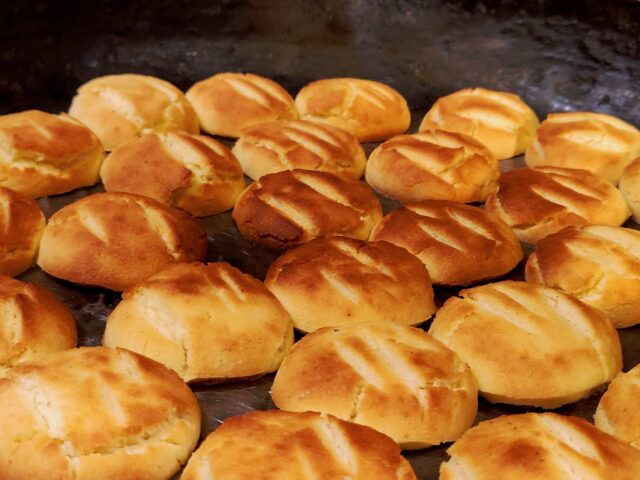
“Aaraam se 20-25 din khao kabhi kharab nahi hoga ye. Bambai, Kalkatta, har jagah se le jaate hain, teesri peedi chal rahi hai hamari isi jagah pe,” (you can easily store these for 20-25 days, they don’t go stale. People come from Mumbai, Kolkata, everywhere and take these back, this is our third generation in this very spot). One huddler interrupts, “le jaane waale 5-5 kilo bhi le jaate hain,” (some take 5 kgs. also). Yes, the huddlers are still here.
His father stood at the same spot for 70 years, without a name, without an address. They’ve never needed either, people always come searching.
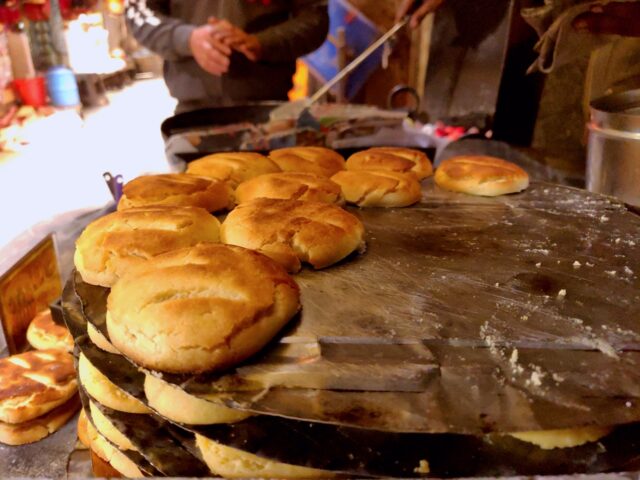
Over the years, Mahesh has become the social anchor of this lane, especially in the winters. Some days, people stand here for hours warming their hands from the coal and discussing their personal matters with him. He stands there, always smiling and patiently lending an ear and a warm biscuit to comfort them.
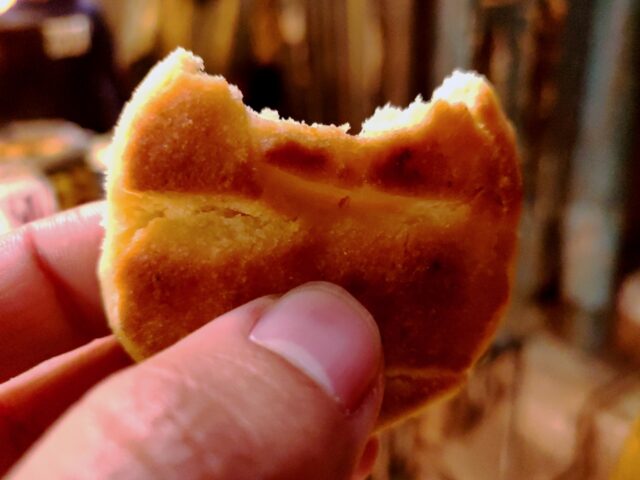
A fresh batch is ready and he tosses one into my palm after it cools to a comfortably hot temperature. The fact that this nankhatai is unlike any I’ve had before is, well, a fact. No professional oven, no temperature indicators, no timers. This isn’t flavoured with any cardamom or rose – just an excellent shortbread biscuit that will melt in your mouth and send warmth running through your body, while you’re standing in some narrow gully on a numbing December morning.
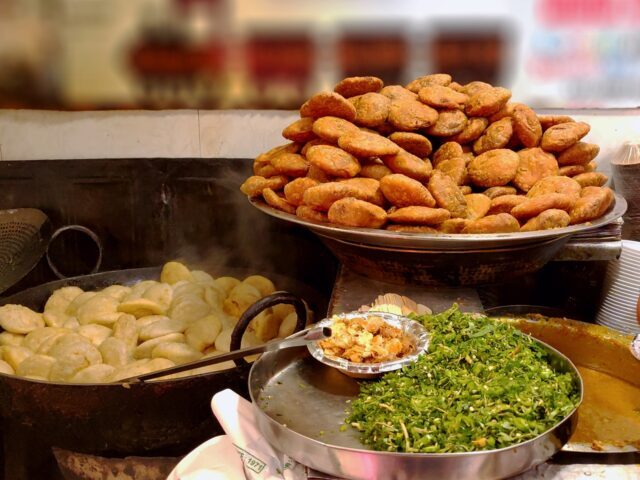
There are many tripodal, single dish artists like Mahesh in these lanes. Not all of them as uninhibited as he is, but many of them equally talented.
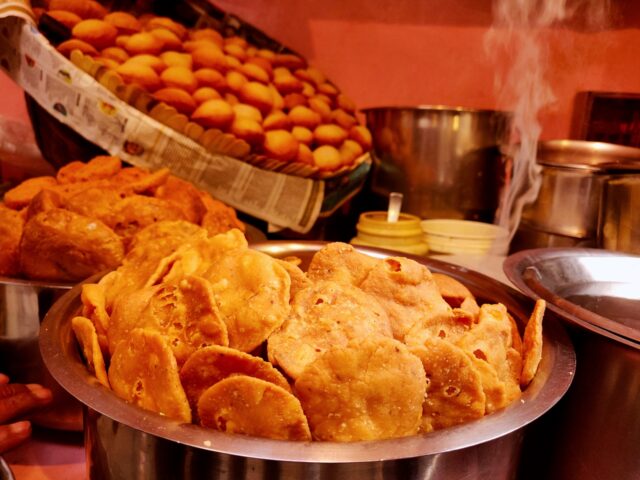
This living city is where chaat originated and some of the best chaat here, is to this day, found on khomchas. You could fill your stomach with a plate of matar kulcha, kachori aloo or papdi chaat doused in creamy yogurt and secret masalas.
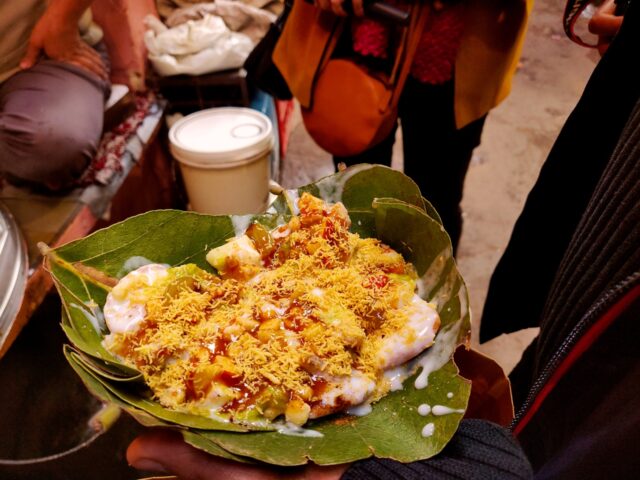
You could take a break and eat something just for fun (no one stops eating here), like different varieties of namkeen and papdi tossed with chopped onions, chillies, chaat masala and a dash of lemon; or the best pani patashe filled with digestive water containing mint, amchur, saunth, harad and zeera.
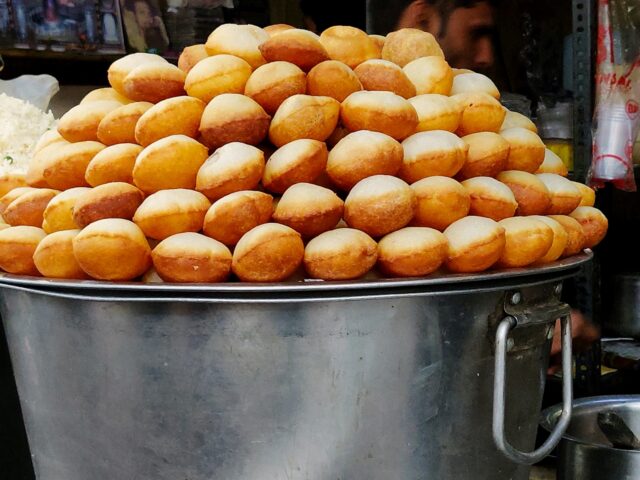
Otherwise, get some nutrition on-the-go with a fun spin on a wholesome plate of fruit. The concept of fruit-chaat has always intrigued me. Beetroots, papaya, pineapple, baked potatoes and sweet potatoes, grapes, apples, bananas, all suitable seasonal produce tossed in tangy chaat masala.
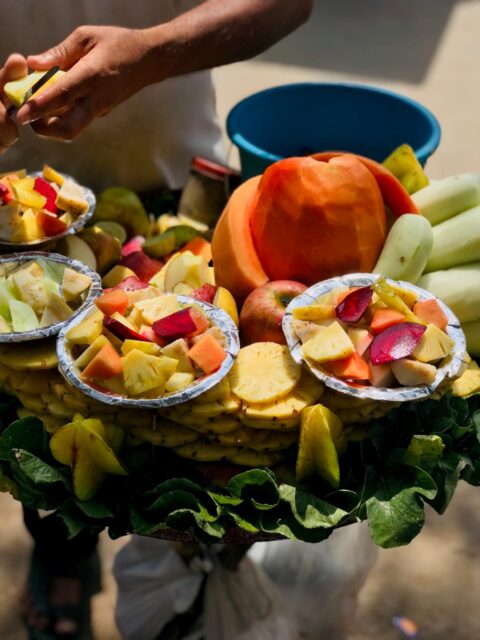
I walk in and out of lanes, marvelling at the innovativeness of these drifting eateries. Despite no walls, seating or even leaning space, they manage to create some semblance of an ambience. The hero ingredient or dish always placed strategically to lure you; a signature, nostalgia-inducing incense stick to ward off insects and keep the surroundings fresh and fragrant; fruits arranged in colourful patterns; conversations to keep the crowd engaged; and a live open kitchen for your viewing.
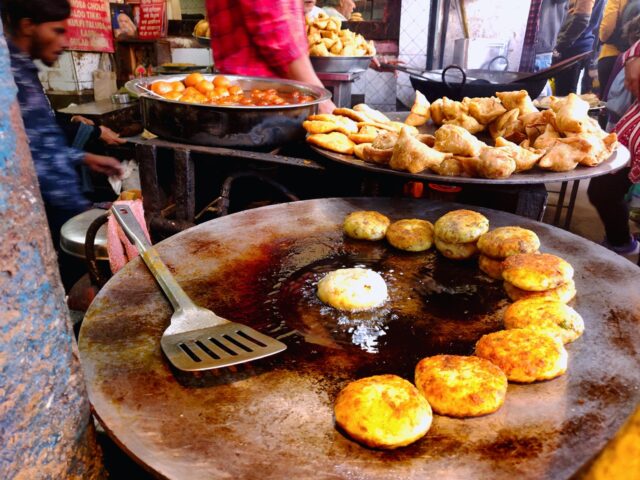
After half a day of culinary debauchery, when I can eat no more, I make a quick stop at Khemchand’s Daulat ki chaat. This theatrical will be incomplete without the artful episode of the Daulat ki chaat wala. His motorbike is parked next to his stand in the congested paranthewali gully. He offers his customers a seat, “Aaramse bike pe baithke khaaiye,” (you can relax, and sit on the bike and eat). I did not sit, but full points for service.
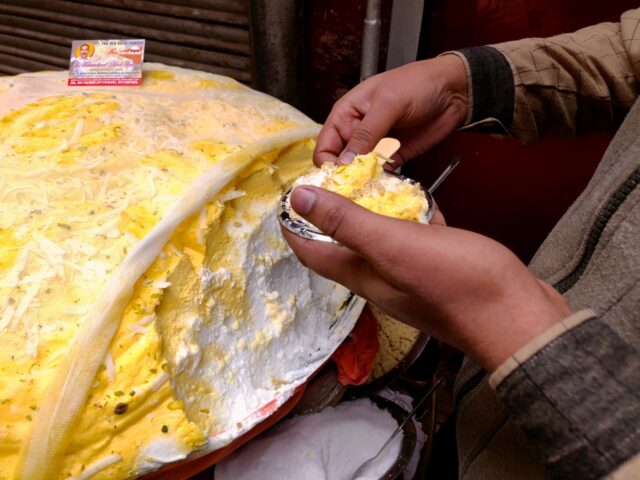
At 8 pm every night, the milk is poured into vessels, covered with a net and kept on the terrace for about 4-5 hours, so the winter dew can cool it and work its magic. At 1:45 am everyday, the Khemchand family starts churning the milk. While one person churns the milk, another keeps pressing the milk foam down lightly to make it more compact and prevent it from falling flat. The top layer is flavoured with saffron. After churning 22 to 23 litres of milk for about 7-8 hours, at 9 am one paraat (large platter) is ready.
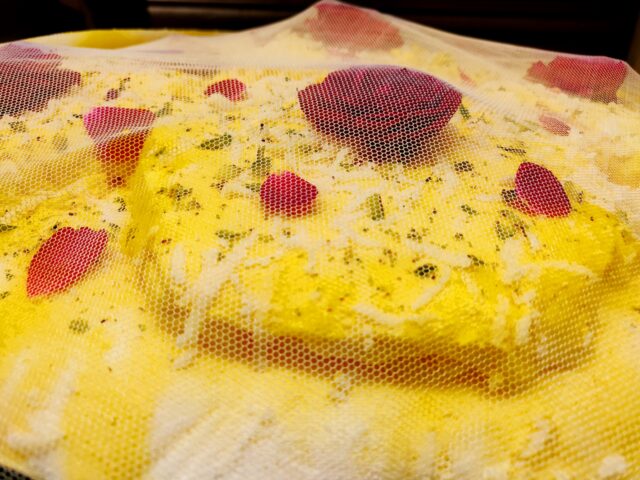
It is covered with a light net and set up on a khomcha in a well-shaded spot away from any sunlight. Khemchand carefully scoops out some of the foam into a small plate and tops it with a little bit of the saffron foam, powdered sugar and khoya. None of these are added earlier, to prevent the foam from collapsing.
Such exquisite, textural, edible art, made so accessible.
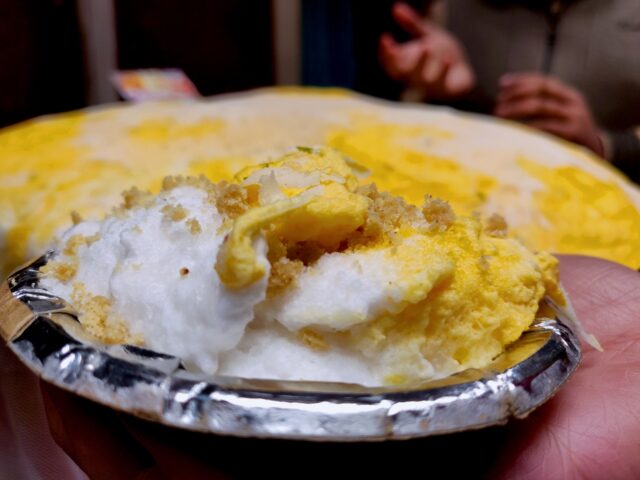
For generations, every wandering cook, with their signature dish has elevated the character of the walled city, never expecting much in return.
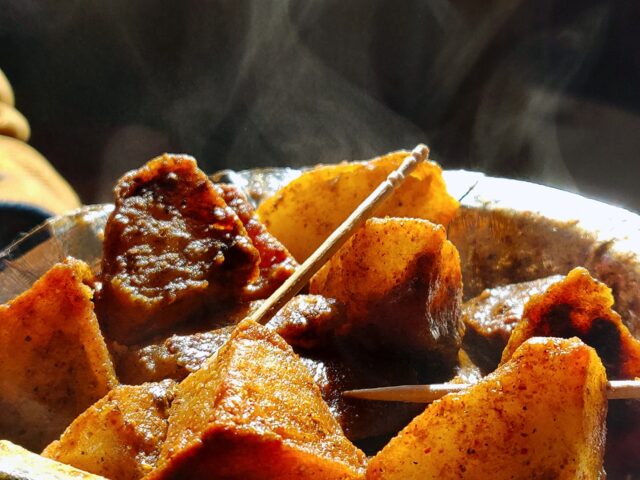
Next time you’re here, walking through this maze following your GPS, by all means, experience the locatable. Then, also allow your curiosity to get the better of you and stop at these non-descript nomadic khomchawallahs. The ones who have carried the culinary inheritance of Shahjahanabad on their shoulders and upheld it all on a tripod. The ones that have made their mark without taking up any space. Literally.
Translations and detailed descriptions are provided to give a better understanding of the story to people from different cultural backgrounds across the globe.

